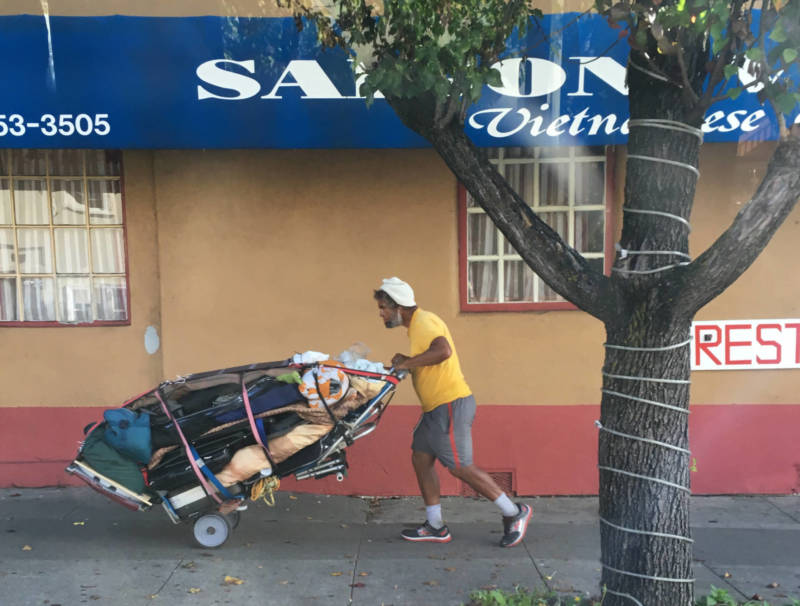Marin County officials have announced a nearly 30% drop in the county's chronic homeless population in the last two years.
Marin Reports Big Drop in Chronic Homelessness

Citing preliminary data from January's Point-in-Time countywide homeless count, officials said they had identified 257 chronically homeless people — those who have been homeless for at least a year and struggle with a disabling condition. That's 102 fewer than had been counted in the 2017 tally.
“That is 28% fewer than just two years ago," said Marin County Supervisor Katie Rice at a press conference in San Rafael on Wednesday. “This data shows we are on the right track and that it is indeed possible to end chronic homelessness."
But the total number of homeless people throughout the county — including both chronic and short-term — decreased less dramatically, from 1,117 in 2017 to 1,034, a 7% dip.
Point-in-Time homeless counts are mandated every two years by the U.S. Department of Housing and Urban Development to determine the amount of federal homelessness funding that communities receive. The final report, including location data, will likely be available later this summer.
Although the overall reduction in homelessness was modest, county officials pointed to multiple signs of progress, including a 40% decrease in homelessness among people with serious mental illness, a 28% decrease in family homelessness and a 10% decrease in youth homelessness.
The county attributes these notable drops to the "housing first" strategy it adopted two years ago, an effort to find permanent housing and supportive services for its most vulnerable populations, an alternative to funneling them in and out of temporary emergency shelters. It also instituted a collaboration among multiple agencies and nonprofits, which now meet regularly to share data and determine where to direct resources.
The new approach was largely motivated by a striking 36% rise in chronic homelessness the county reported between 2015 and 2017.
"We have shifted our whole system of care to evidence-based practices, housing people who are most vulnerable first," said Ashley Hart McIntyre, the county's homeless policy analyst. "In the last few years, we started looking at the homeless population not as a homogenous population group, but person by person ... and started seeing people who we never expected to see housed, gain and maintain housing.”
McIntyre said she cried when she saw the most recent data.
"It’s so encouraging to see what we’re doing is having a positive effect,” she said, noting that her team adopted the new strategy largely on faith. "When that pays off, it’s incredibly moving."
While homelessness extends throughout the county, it looks notably different from one place to another, said McIntyre, from encampments below overpasses in San Rafael to floating shanties on Richardson Bay.
Marin's total homeless population, she added, is likely to remain stubbornly high until the county's exorbitant housing prices start to fall.
"As long as that’s a problem," she said, "we’re going to have some struggles."